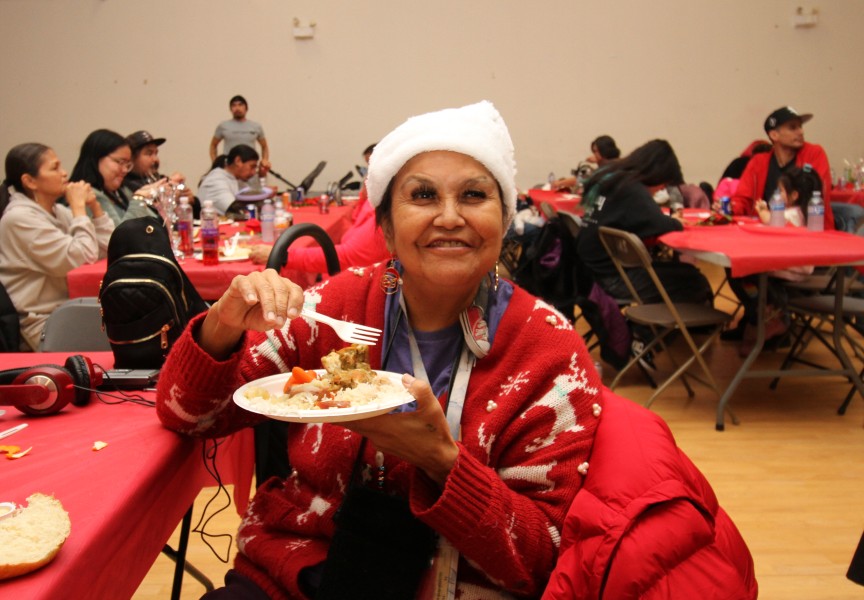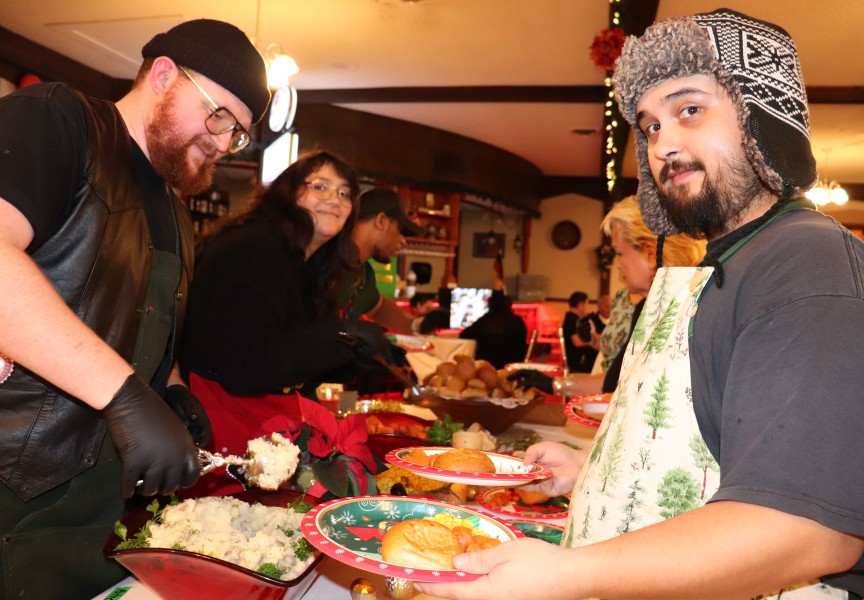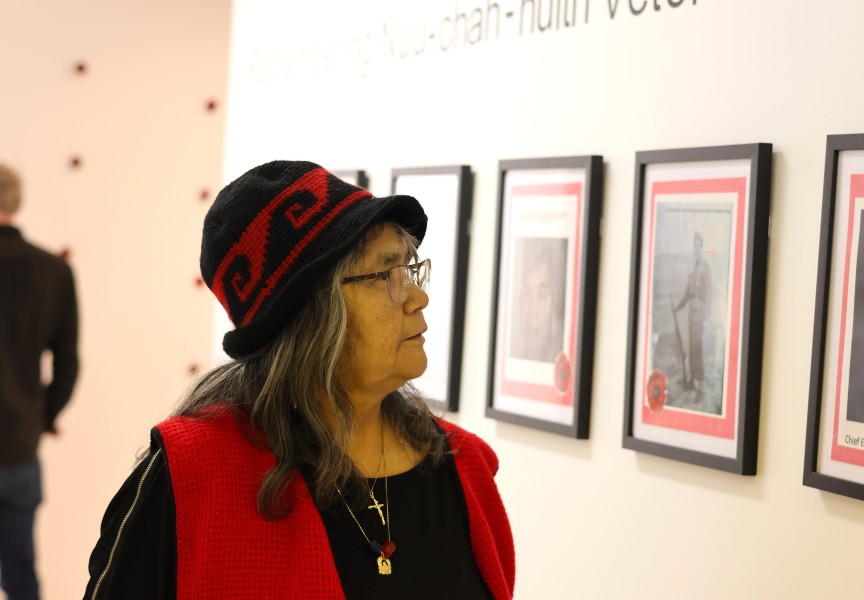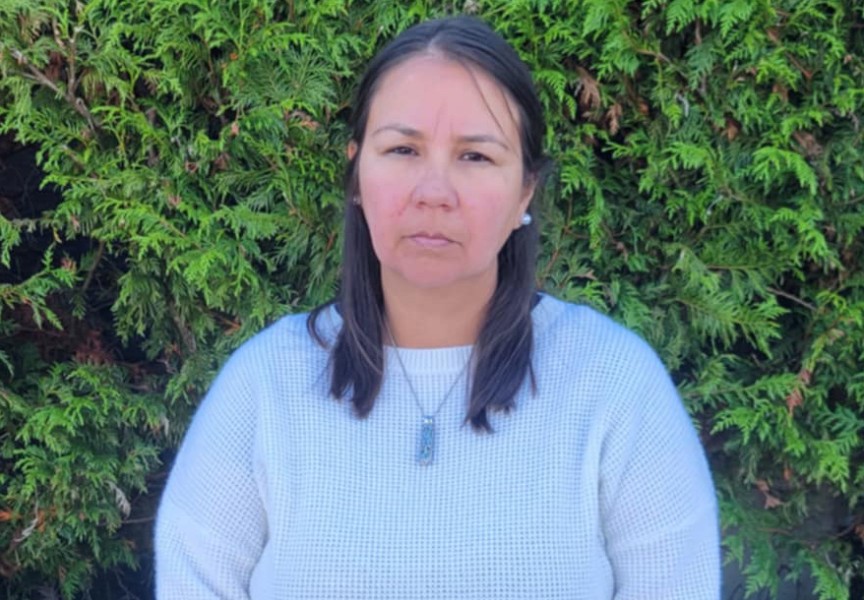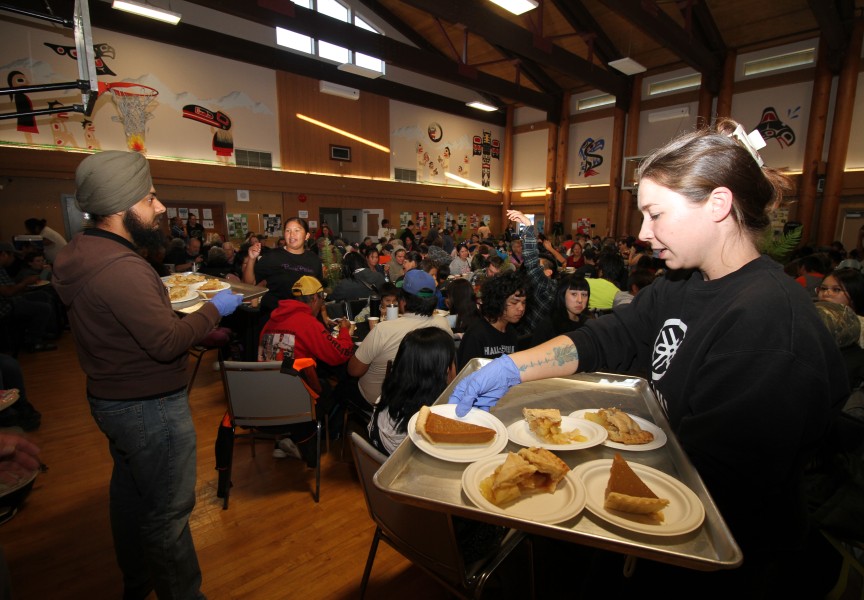First Nations forestry companies were urged to put aside their differences and work together to become a major force in the B.C. forest industry.
Interested parties met at the Island First Nations Forestry Forum, which took place at Maht Mahs Gym on March 6.
Co-hosted by First Nations Wildcrafters and the First Nations Forestry Council, the event drew barely two dozen participants over the course of the morning. But despite the low turnout, Nuu-chah-nulth Tribal Council President Cliff Atleo said First Nations forestry operators must put together a collective vision and strategy if they hope to succeed in what is a volatile industry.
“There is a need for us to sit down collectively, as Island First Nations, to discuss our forestry. There is no end to the number of topics we have to discuss,” Atleo said. “Because we didn’t have a strong showing today, the issue is not going to go away.”
That need for collaboration and cooperation was a consistent theme in the morning presentations.
Collectively, B.C. First Nations control a significant portion of the provincial annual allowable cut (AAC), according to Keith Atkinson, CEO of the First Nations Forestry Council. He is a member of Snuneymuxw First Nation.
Atkinson warned that until this disparate group of tenure-holders begins to act in concert, they will continue to remain at the “back end” of the market, despite genuine world interest in First Nations forest products.
“One hundred and sixty First Nations are engaged in forest agreements, with over 200 tenures in 2008, and that is now approaching 300,” Atkinson said. “The AAC is 12 million cubic metres. In 2008, they harvested 5.8 million m3. There is a whole lot of wood on the table to find markets for.”
Atkinson said efforts to market First Nations forest products internationally have been frustrating. At a trade mission in China in July 2008, Chinese industry officials expressed great interest in First Nations products and culture, as did participants at the Global Buyers Network in September 2009. The problem has been one of identifying the appropriate products and suppliers, he said.
“We had First Nations representatives at the October 2011 trade mission to China,” Atkinson said. “One of the Chinese industry people came here recently asking for ‘1,000 m3 of product’ to take home with him.”
The businessman was not specific about what he was looking for, and it was a scramble, involving outside brokers, to locate and put together a shipment of mixed products, Atkinson said.
Citing the need to create a marketing and branding strategy, Atkinson said a regional entity to combine marketing efforts would be a good start.
“We’ve got half a million m3 coming out of this region, but none of you have a sales and marketing staff,” he said. “If that volume is brought together, you could compete on scale [with the big companies].”
What is needed is a coordinated effort to identify markets for First Nations forest products. That will require start-up funding to develop that capacity. It should be a no-brainer for the province, but it has been a tough sell, despite the obvious benefit to the province, Atkinson said.
“Fifty-seven per cent of the First Nations harvest went to the primary forest sector. I thought that would have been higher,” Atkinson said.
The rest is going to niche markets such as small mills and the value-added sector.
“That is a huge benefit to the province and the rural areas. The province wants to see that activity,” Atkinson said.
But despite that, while the province has been willing to fund studies on First Nations forestry operations and their potential for expansion, it has been difficult to secure significant funding for programs that would actually develop that potential, Atkinson said.
One of the negative impacts of allowing the First Nations forest industry to sputter along is that it becomes difficult to convince young people to consider a career in the industry, Atkinson said.
“There is a need to attract young First Nations to forestry. The benefit to the province? These guys all get well-paying jobs and they pay taxes. The companies also pay stumpage,” he said. “The question is, with 12 million m3 of AAC, why aren’t we in manufacturing?”
Atkinson said while the forest industry is currently lagging, the forecast is for a full turnaround by the year 2015. It is imperative that First Nations develop a collaborative vision and the organization to fulfill it, he believes.
In his presentation, Mike Bonshor of MNP Aboriginal Consulting, reinforced the idea that there is a ready demand for forest products with a First Nations stamp. Five years ago, Bonshor travelled to Europe, where he spread the message that B.C. First Nations were assuming greater and greater control of the forest resource.
But while there was already good knowledge of mainstream B.C. products, there was very little understanding of First Nations tenures and concern about the lack of treaties, he said.
“The question was, ‘What is this First Nations product and where do I buy it?’” Bonshor said.
Again, the problem is the lack of a basic business structure to make those sales happen, he said. Only by combining forces can First Nations achieve the volumes of timber and the harvesting and transporting capacity to develop full-time professional organizations with meaningful revenues.
“The answer isn’t going to come from the province, and it isn’t going to come from industry. It is going to come from ourselves,” Bonshor said.
Archie Little, who speaks for Nuchahlaht First Nation, said on-reserve housing should be a priority for the First Nations forest industry.
“Normally, when you think of forestry, you think of selling logs,” Little said. “But just look at Ahousaht and think about the amount of wood they need to build their housing.
“We need capacity building, just to get our young people interested in the industry.”
Bonshor said that, according to provincial averages, the 500,000 m3 First Nations AAC on the South Island alone could represent 500 direct jobs in the community. That wood flows into the provincial economy and creates benefits downstream, but with a collaborative marketing approach, a higher percentage of those benefits could be retained at home.
“If we’re leaving the major portion of the benefit out in the mainstream economy, how is that helping us? Bonshor said. “Let’s try it out and see where it takes us.”
Later in the day, delegates took part in a marketing experiences panel and discussion with Iisaak Forest Resources, followed by a presentation on marketing non-timber resources from Keith Hunter of First Nations Wildcrafters.


